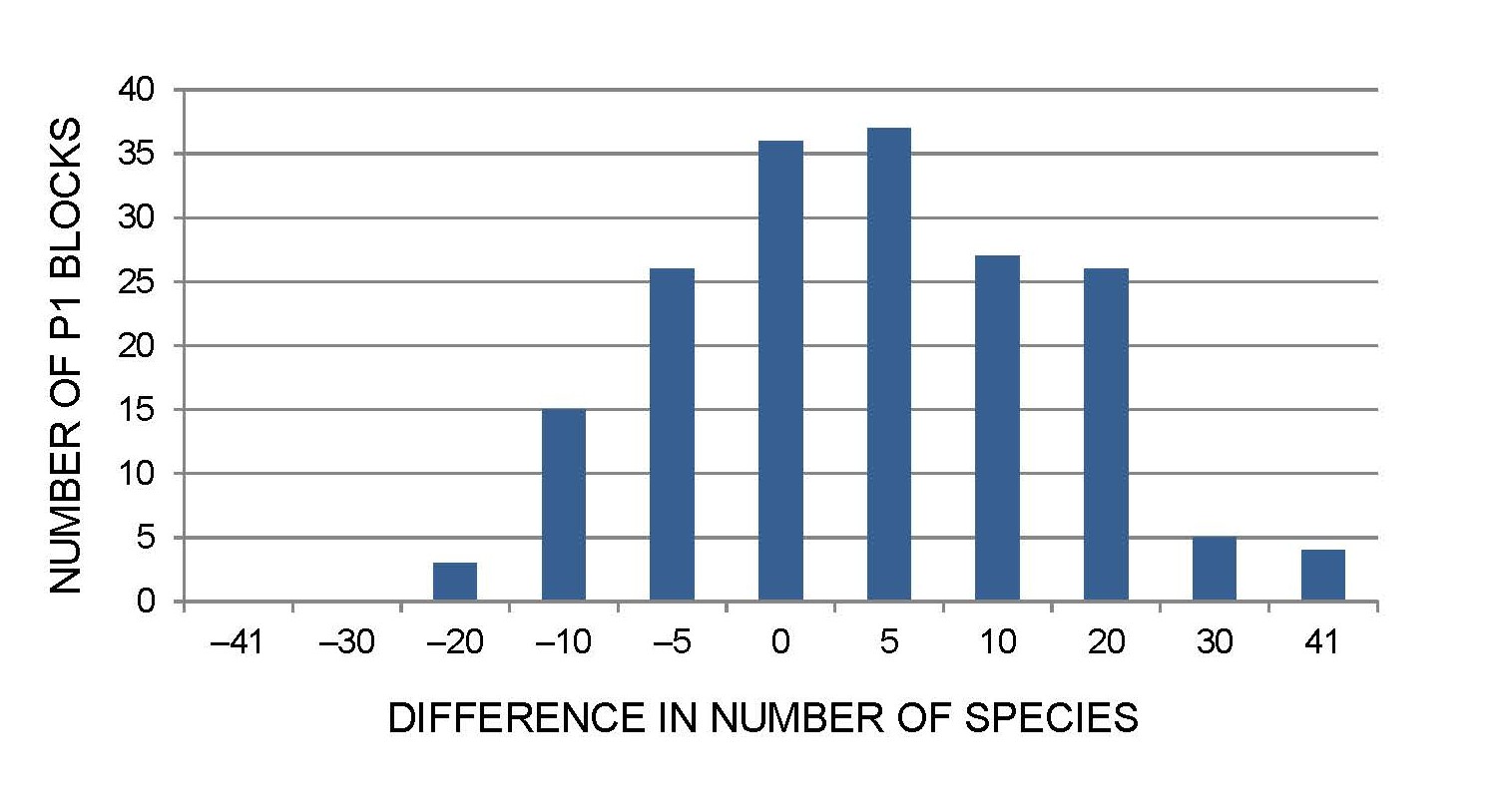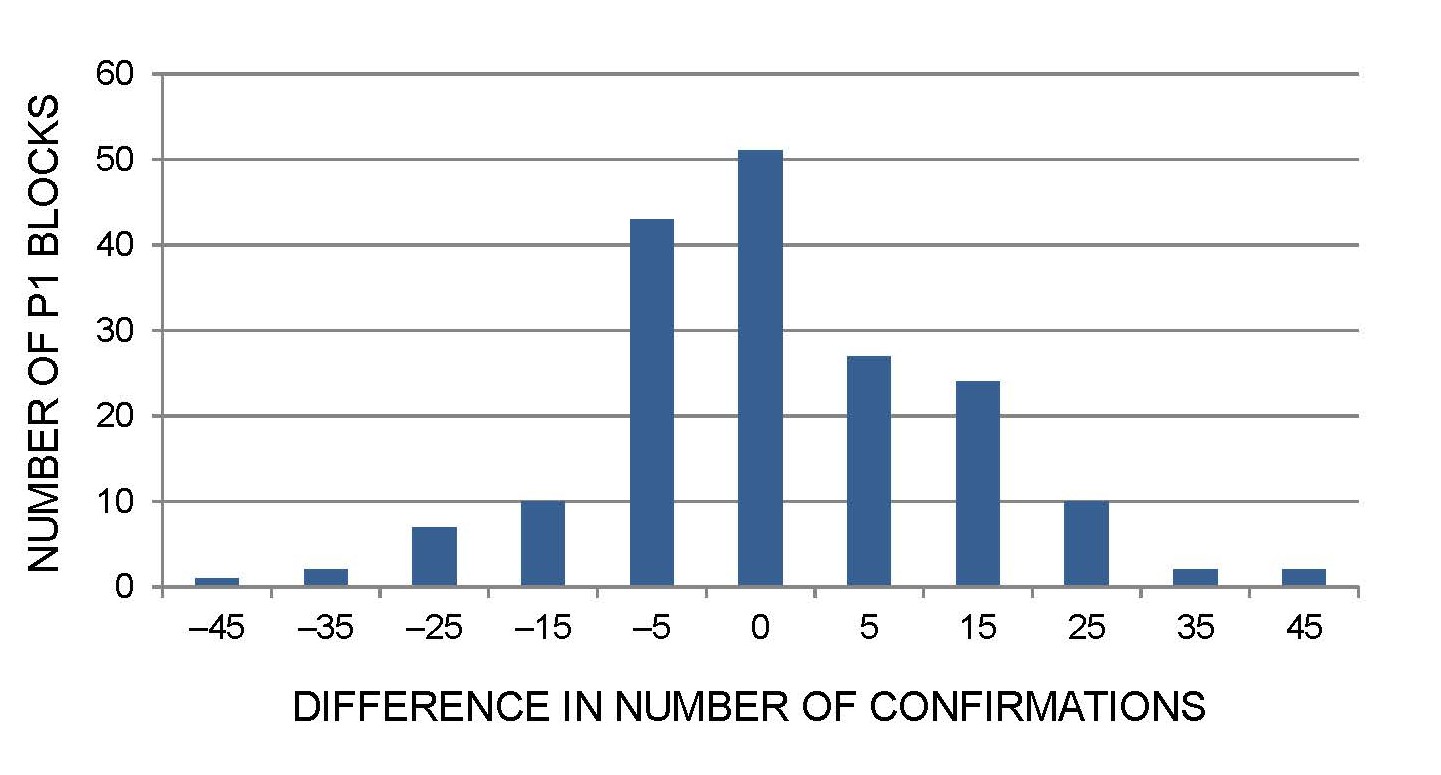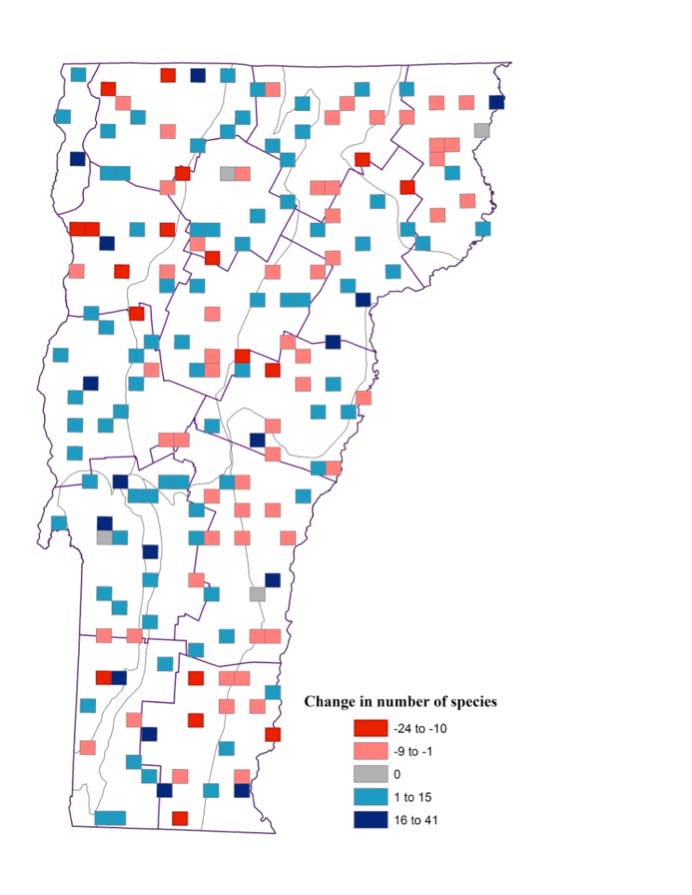Measuring effort on a block is important part of standardizing surveys among blocks and between generations of atlases. It is important that a change in block occupancy between two atlases is not due to differences in observer effort.
The number of hours spent surveying a block is often used as an approximate measurement of effort. However, A beginning to intermediate birder may take longer to detect species than an accomplished birder. If observer skill level is somehow controlled for, other factors such as the topography and accessibility of a block may affect the number of hours required to survey all of the habitats in the block. Presumably, these factors do not change dramatically within a block, and therefore may not greatly influence comparisons between one atlas and the next.
Another way of estimating survey effort is to use the total number of species and confirmations in a block as a proxy to the effort expended surveying. It can also be used to compare block coverage between atlases. The assumption is that a block with a similar numbers of species between the first and second atlases received approximately the same level of survey effort in each atlas period. Because a change in number of species may also be due to real changes in species richness between atlases, it is most useful as a means to compare many blocks between atlases.
In the state as a whole, there were many Priority 1 blocks with more species found during the second Atlas, but these appear to be fairly evenly balanced by blocks in which more species were recorded during the first Atlas (Fig. 4). These gains and losses between atlases were fairly balanced, indicated by the bell-curved shape of their distribution (Fig. 5 a,b).
Figure 4. Differences in the number of species found in the second versus the first Atlas for Priority 1 blocks (blocks surveyed during both atlases). Blue and red shades indicate more and fewer species in the second Atlas, respectively.
Figure 5. Histograms of the difference between the number of a) species and b) confirmations in Atlas 2 versus Atlas 1. Positive numbers indicate greater numbers in the second Atlas; negative numbers indicate greater numbers in the first Atlas.

 Potential effects of safe dates
Potential effects of safe dates
The first Atlas did not have explicit safe dates, nor was the date of each observation recorded. Some PO and PR records in the first Atlas could have been outside of safe dates in the second Atlas. If there is a discrepancy due to the enforcement of safe dates in the second Atlas, it is possible that a species that appears to have been lost from a block may not have actually been a potential breeder in the first place.







